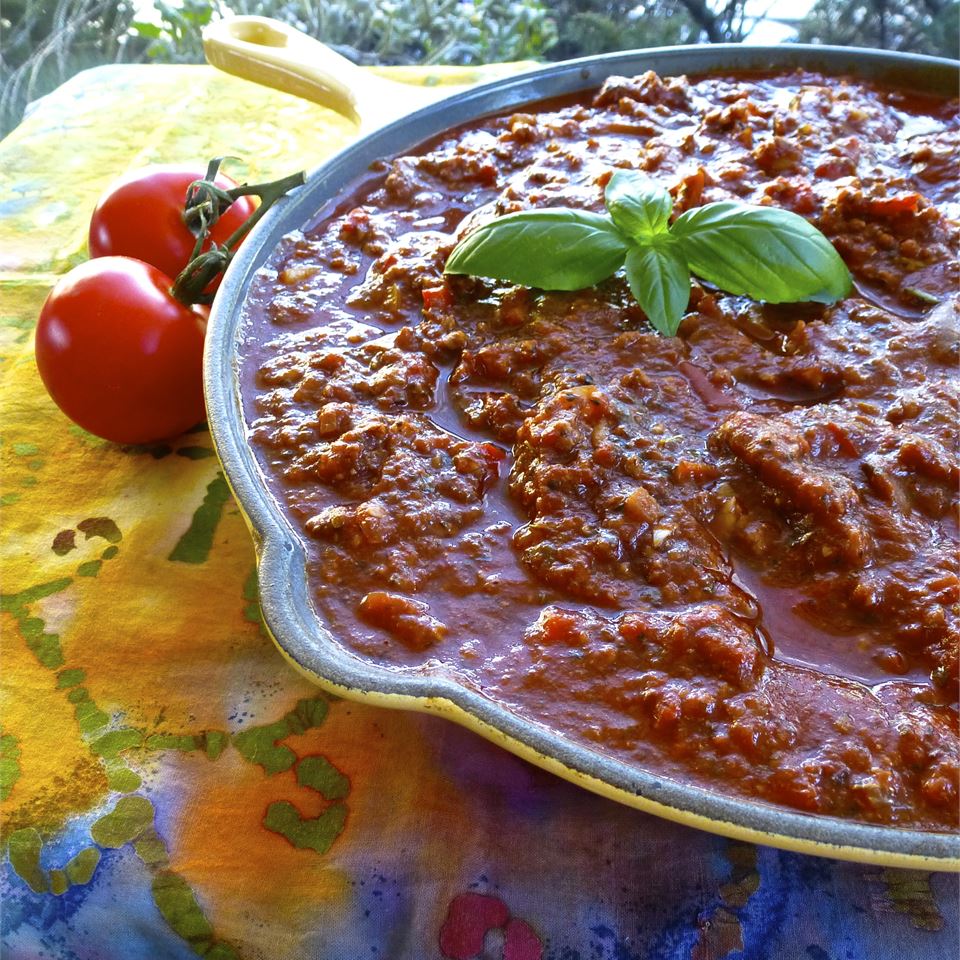This spaghetti is among the first recipes of mine that got a lot of attention, and I love that fact because it exemplifies everything I believe in as a chef: treating ingredients with respect, paying attention to detail, and elevating simplicity.
Provided by Scott Conant
Categories main-dish
Time 5h
Yield 4 servings
Number Of Ingredients 20
Steps:
- Bring a large pot of water to a boil with about 3 teaspoons of salt.
- Meanwhile, put the tomato sauce in a large saute pan and cook over medium heat to further concentrate the sauce's flavors.
- Cook the spaghetti until just shy of tender. Reserve some of the pasta cooking water and gently drain the spaghetti. Add the spaghetti and a little of the pasta cooking water to the pan with the sauce; the starch and salt in that water will help the sauce adhere to the pasta. Add the basil, give the pan a good shake, increase the heat to medium-high, and let the pasta finish cooking in the sauce. The sauce should coat the pasta and look cohesive, and when you shake the pan, the sauce and pasta should move together.
- Take the pan off the heat and add the Parmigiano-Reggiano and butter. Using two wooden spoons (tongs can tear the fresh pasta), toss everything together well.
- Divide the pasta among serving bowls. Finish with a drizzle of extra-virgin olive oil and serve.
- To peel the tomatoes, use a paring knife to cut a small x on each tomato. Bring a saucepan of water to a boil, and have ready a bowl of ice water. Boil the tomatoes for about 10 seconds, then plunge them into the ice bath. The shock of going from hot to cold should cause the skin to contract, making it easier to peel. Use your fingers or a small paring knife to pull the skin off. If the skin is stubborn, try boiling and shocking the tomato again.
- In a wide saucepan, heat 3 tablespoons olive oil over medium-high heat. Add the tomatoes; be careful, as the oil may spurt. Add 1 1/2 teaspoons salt and cook, stirring occasionally, until the tomatoes soften, 2 to 3 minutes. Lower the heat to medium and, using a potato masher, smash the tomatoes, really working the masher to break them up. If the consistency is thick or if they get too dry, add the tomato boiling water or reserved tomato juice to the pan. Cook, occasionally mashing and stirring, for 45 minutes.
- Meanwhile, in a small saucepan, heat 1 cup extra-virgin olive oil over medium heat. Add the garlic and red pepper flakes and cook, stirring occasionally, until the garlic is golden brown, about 5 minutes. Remove the oil from the heat and let the ingredients steep for 5 minutes.
- Strain the oil into the cooked tomatoes. Stir to combine. Remove the sauce from the heat. Taste and add additional salt, if needed. The sauce may taste spicy on its own, but it gets balanced when used with other ingredients, especially the pasta, butter, and cheese. The sauce will keep, covered and refrigerated, for 2 days. Reheat gently before serving.
- In a stand mixer fitted with the dough hook, combine the "00" flour, semolina flour, and salt on low speed. Add the egg yolks, olive oil, and up to 1 1/3 cups water, adding the water a little at a time, and continue to mix on low speed. Once the flour is incorporated, increase the speed to medium-low and mix/knead the dough for 5 minutes.
- Lightly dust a work surface with a mix of "00" flour and semolina.
- Dump the dough out onto the work surface and knead by hand for a few minutes. Shape the dough into a rectangle, wrap it in plastic wrap, and let it rest for 1 hour.
- To roll and shape the dough, set the pasta machine on its widest setting. Lightly flour a rimmed baking sheet. Cut the pasta dough into 4 pieces. Work with one piece at a time and wrap the others in plastic wrap to prevent them from drying out. Very lightly flour the dough and stretch it by hand, then put it on the pasta roller. Run it through the pasta machine twice, starting at the longest setting. Fold it in half and run it through again, so the dough gets thinner each time and wipe the surface of the pasta for excess flour as you go. Run the dough through the machine a couple more times; this serves as a final kneading.
- Set the machine to the next level of thickness and run the piece of dough through again. Keep running the dough through the machine, adjusting the rollers to a thinner setting each time, until the sheet is 1/8-inch-thick; on most machines this means stopping at the 3.5 or 4 setting. Cut the sheet to lengths of about 12 inches. Then, using the linguine cutter, cut the sheet into strands. Repeat with the remaining dough pieces.
- Dust the strands with a little flour (preferably a mix of the "00" and the semolina), and gather the strands into nests by wrapping them around your hand. (At the restaurant, we portion the spaghetti into 4-ounce nests.) Dust the nests with a little more flour, place on the baking sheet, and freeze until hard. (Once the spaghetti is rock-hard, it can be transferred to a freezer bag or other airtight container and kept frozen for up to 1 month.)
- You can also layer the sheets of pasta with semolina flour and cover them with plastic wrap while you get set up to cook them.
Are you curently on diet or you just want to control your food's nutritions, ingredients? We will help you find recipes by cooking method, nutrition, ingredients...
Check it out »
#60-minutes-or-less #time-to-make #course #main-ingredient #preparation #main-dish #pasta #easy #beginner-cook #dietary #pasta-rice-and-grains #spaghetti
You'll also love










